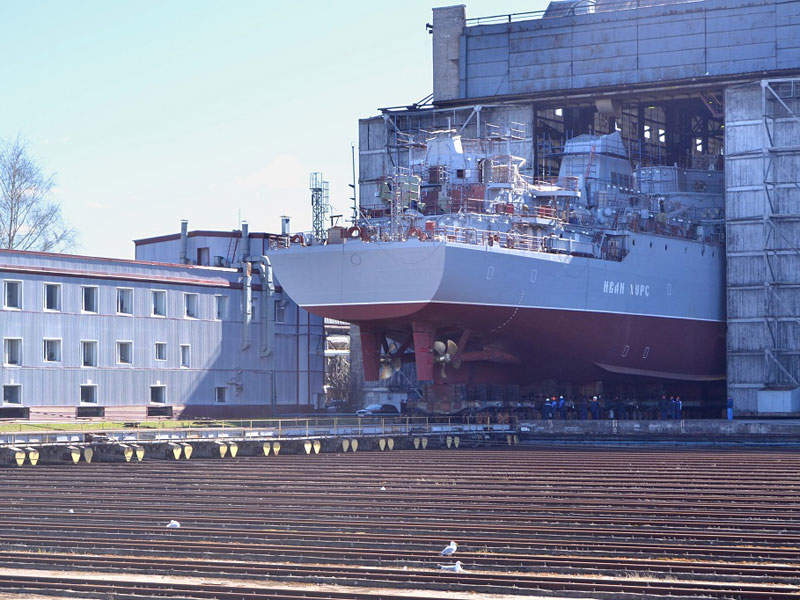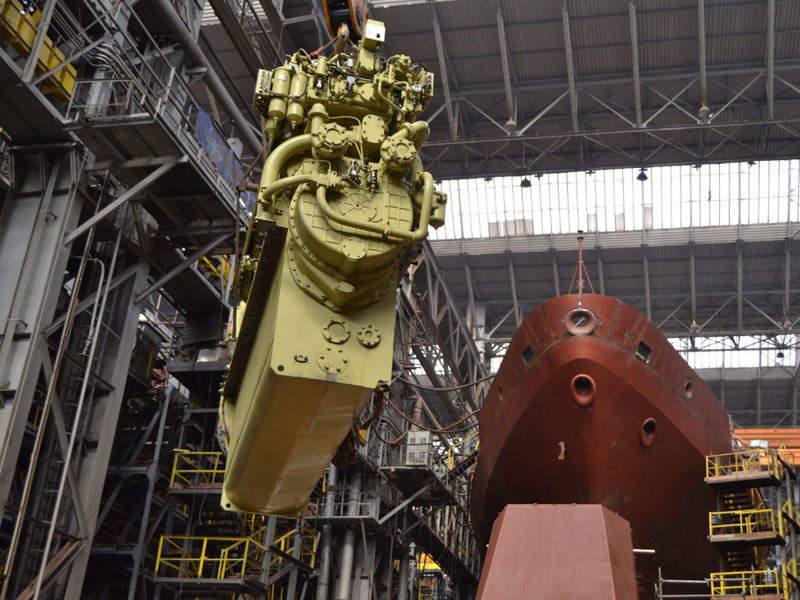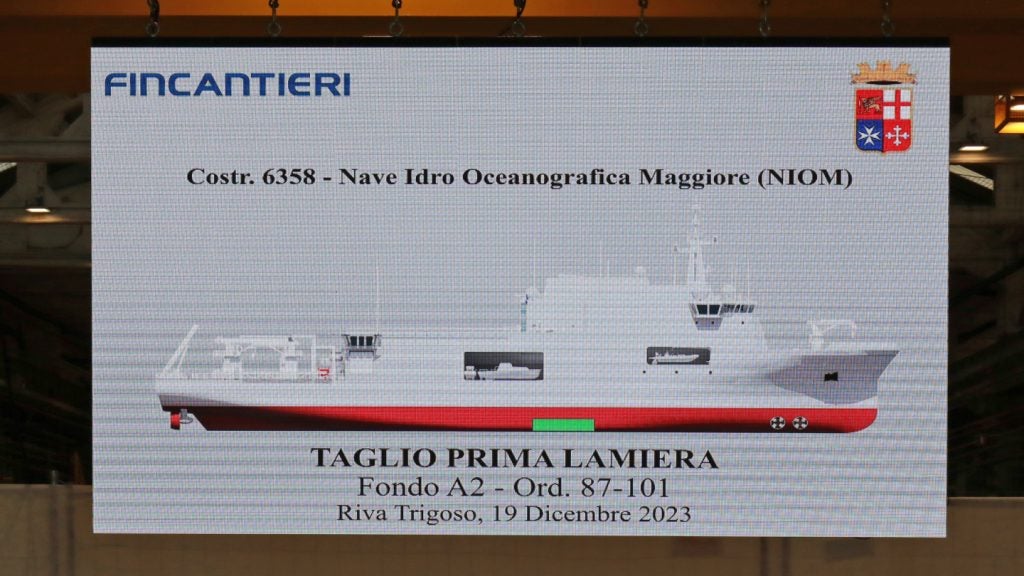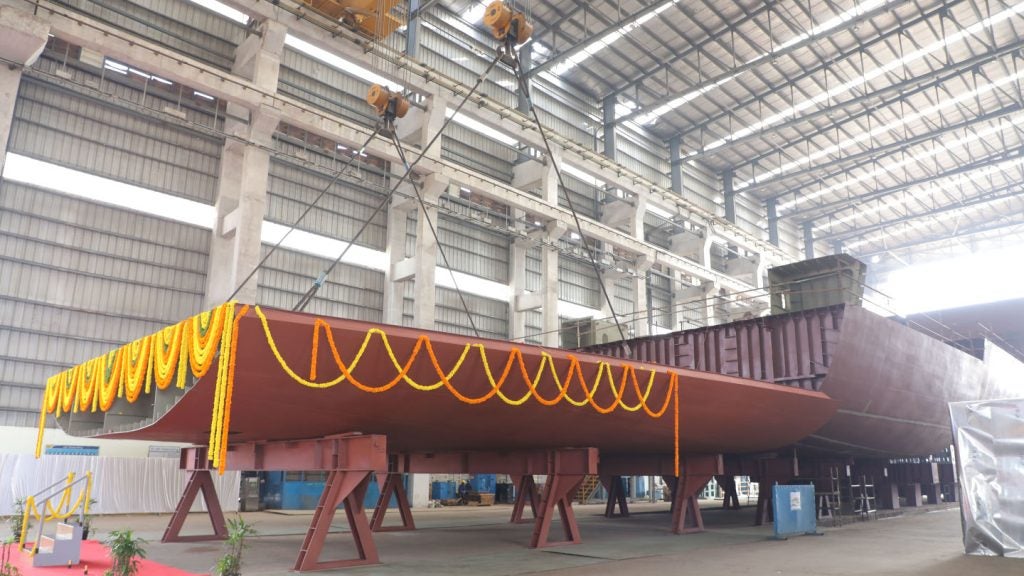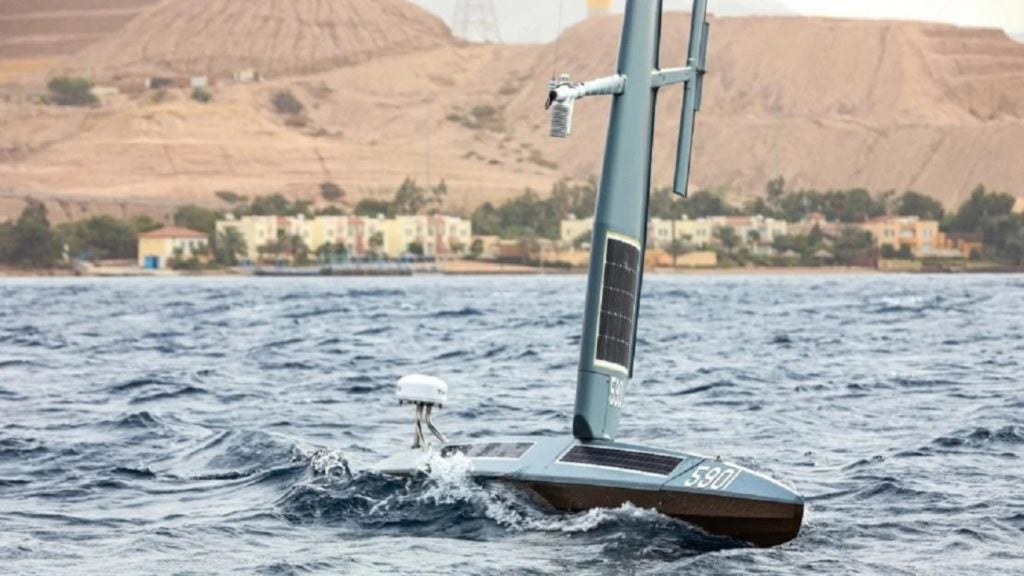Yuri Ivanov-class (Project 18280) is a fleet of two intelligence-gathering vessels built to meet the specific mission needs of the Russian Navy. The vessels are designed by OJSC Central Design Bureau Iceberg and constructed by JSC Shipbuilding Plant Severnaya Verf.
Equipped with antennae and electronics, the vessels are intended to provide Russian Naval Forces with intelligence-gathering, surveillance, electronic warfare, command and control, communications, fleet management, and signals intelligence capabilities.
The vessels are also capable of performing air defence missile systems detection and tracking.
Project 18280 class orders and deliveries
Keel for Yuri Ivanov, the lead vessel in the class, was laid in December 2004 and rolled out in June 2013. It was named after vice-admiral Yuri Vasilievich Ivanov. Its launching ceremony was held in September 2013.
The vessel underwent sea trials in December 2014 and was commissioned into the Russian Navy’s Baltic Fleet in July 2015. In November 2015, Yuri Ivanov was transferred to the Russian Navy’s Northern Fleet based in Severomorsk, Murmansk Oblast.
Another vessel in the class is Ivan Hurs, named after vice-admiral Ivan Kuzmich Hursa. Keel for the vessel was laid in November 2013. The ship was lowered into the water in May 2017 and underwent sea trials from February 2018 to April 2018.
The Ivan Hurs vessel was commissioned into the Russian Navy’s Baltic Fleet in June 2018.
Yuri Ivanov class design and features
Each intelligence-gathering vessel in the Yuri Ivanov-class has a length of 95m, width of 16m and draught of 4m. The hull and superstructures are built using steel.
With a full load displacement of about 4,000t, the vessel can accommodate up to 120 personnel.
A Gamma-01F fire-alarm system, developed by Russian company NGO Fire service equipment (NPO PAS), is fitted to provide fire protection for the vessel.
Located amidships, the integrated bridge unit enables the crew to provide reliable command and control for the on-board equipment. Radars and antenna masts are mounted behind the bridge section.
Armament
The Project 18280-class communication vessels are armed with two MTPU 14.5mm marine pedestal machine-gun mounts located on the deck. The machine guns are effective against lightly armoured surface, coastal and air targets flying at distances of up to 2km.
Operated by a single person, the gun offers a rate of fire of 450 rounds a minute.
The vessel is also equipped with six 9K38 Igla surface-to-air missile system (SAM) launchers consisting of up to 32 9M39 missiles to defend fixed-wing aircraft and helicopters.
Navigation and communications
The Yuri Ivanov-class is equipped with navigation and radar systems for use in reconnaissance and electronic intelligence missions.
The systems include MR 231-3 navigation radar, electronic intelligence (ELINT) systems, signals intelligence (SIGINT) and Screen-CM ship broadcast systems. They also include radar masts, communication systems, radio equipment and an integrated hardware/software system.
A Subtitle-23 electronic system is also installed to provide electromagnetic compatibility, weapons control, surveillance, intelligence, data exchange, jamming of missile systems and electronic warfare capabilities.
The on-board radars and electronics are also used to detect and track missiles in-flight over a wide frequency range.
Project 18280 class propulsion and performance
The Project 18280-class intelligence-gathering vessels are powered by a 5DRA diesel-electric propulsion system consisting of two eight-cylinder 11D42 30/38 marine diesel engines, which develop an output power of 2,720hp each.
The propulsion unit also comprises two 360kW ADG-630 diesel generators and two controllable-pitch propellers.
Each vessel has a maximum speed of 20k and a cruising range of 8,000 miles at a speed of 16k.

